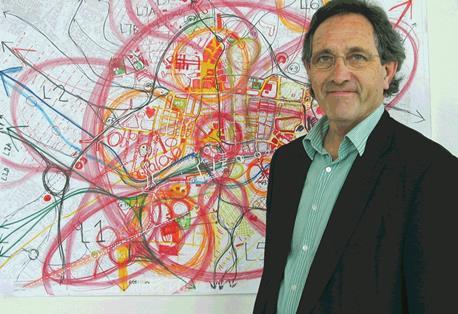The Stray in Harrogate is one of the regions most important spaces, hosting Europe's strongest springs. The Stray is protected land under the Stray Act which prohibits ownership of The Stray (it is under common ownership of the people of Harrogate), and thus development on The Stray. The decision to make this space protected came out of a study of representations of the space- ie mapping where the springs are.
 In reality, someone must 'manage' The Stray in order to realistically enforce these things, but it is difficult to enforce something when no-one can really decide what The Stray is- people hold different ideals and visions (representational space) of The Stray, which shows in the variations of practice here. This results in a variety of power struggles.
In reality, someone must 'manage' The Stray in order to realistically enforce these things, but it is difficult to enforce something when no-one can really decide what The Stray is- people hold different ideals and visions (representational space) of The Stray, which shows in the variations of practice here. This results in a variety of power struggles. The Stray, as legally greenbelt land, should represent a green lung and improve the environment. There is not much debate that it does this, but there has been an ongoing debate about whether to allow cycling on The Stray. Surely this should be encouraged by those that want to see The Stray remain an icon of environmental benefit, but there are those that say cycling on The Stray is another level at 'chipping away' at the unique protection of The Stray.
The Stray, as legally greenbelt land, should represent a green lung and improve the environment. There is not much debate that it does this, but there has been an ongoing debate about whether to allow cycling on The Stray. Surely this should be encouraged by those that want to see The Stray remain an icon of environmental benefit, but there are those that say cycling on The Stray is another level at 'chipping away' at the unique protection of The Stray. The Stray is supposed to belong to the people of Harrogate, and while I think this still remains true in the majority, rules and regulations apply that I'm sure many would dispute. One of the most prominent examples must be barbecues, which like all fires, are banned on The Stray (except the annual bonfire).
The Stray is supposed to belong to the people of Harrogate, and while I think this still remains true in the majority, rules and regulations apply that I'm sure many would dispute. One of the most prominent examples must be barbecues, which like all fires, are banned on The Stray (except the annual bonfire).We submit to the conventions on The Stray, although I do genuinely think The Stray represents a more liberal stance than smaller urban spaces; which may well be down to a realistic need to control movement.
 Power struggles can be seen in Millennium Square strongly too. The concept of the space. representational space, was born out of city planners and thinkers who looked at representations of space, such as maps, and envisaged representational space out of it. For example, John Thorp (Civic Architect), studied and analysed city maps and recognised that essentially a car park, surrounded by civic buildings, could become a new heart for the city. Out of this, the idea for a major new public space was born.
Power struggles can be seen in Millennium Square strongly too. The concept of the space. representational space, was born out of city planners and thinkers who looked at representations of space, such as maps, and envisaged representational space out of it. For example, John Thorp (Civic Architect), studied and analysed city maps and recognised that essentially a car park, surrounded by civic buildings, could become a new heart for the city. Out of this, the idea for a major new public space was born.Millennium Square questions whether any public space is really public. Millennium Square is almost entirely paved- and as such is as much of a money spinner as any of the surrounding buildings. The space was designed to be paved in order to host large events- over 7000 people can be held in Millennium Square for any event from paid concerts to football matches on the Big Screen.
Millennium Square also is closed to traffic. There are bollards and reinforced barriers at each entrance to the square, where roads once criss-crossed the space, to make sure traffic cannot enter the square. While this is surely positive, it does show how an authority (in this case Leeds City Council) controls the square.
There are some strong examples of control in the roads around the square. To the north of the square, disabled parking is in operation- although of course one could easily deny this (but face a fine). On the west side of the square, a complex one way system with contraflow cycle lanes are in place. All of this could be ignored if one wanted to. Having said this, it would be rather dangerous to do so. In these situations, the individuals are no longer individuals but just another car in the line of traffic. The three above points regarding Millennium Square show the council's interpretation of practice in the space, but certain sects of the public may have different ideals of the space and thus practice those things there- two examples are skateboarding or the annual water fight so hated by many.
One way in which I would commend The Stray over Millennium Square is that there are no fences or walls on The Stray so people are free to wander- and frequently do- off the path. So perhaps the transparency here is more genuine than in Millennium Square where it is little more than illusion as control is heavily enforced here.












No comments:
Post a Comment